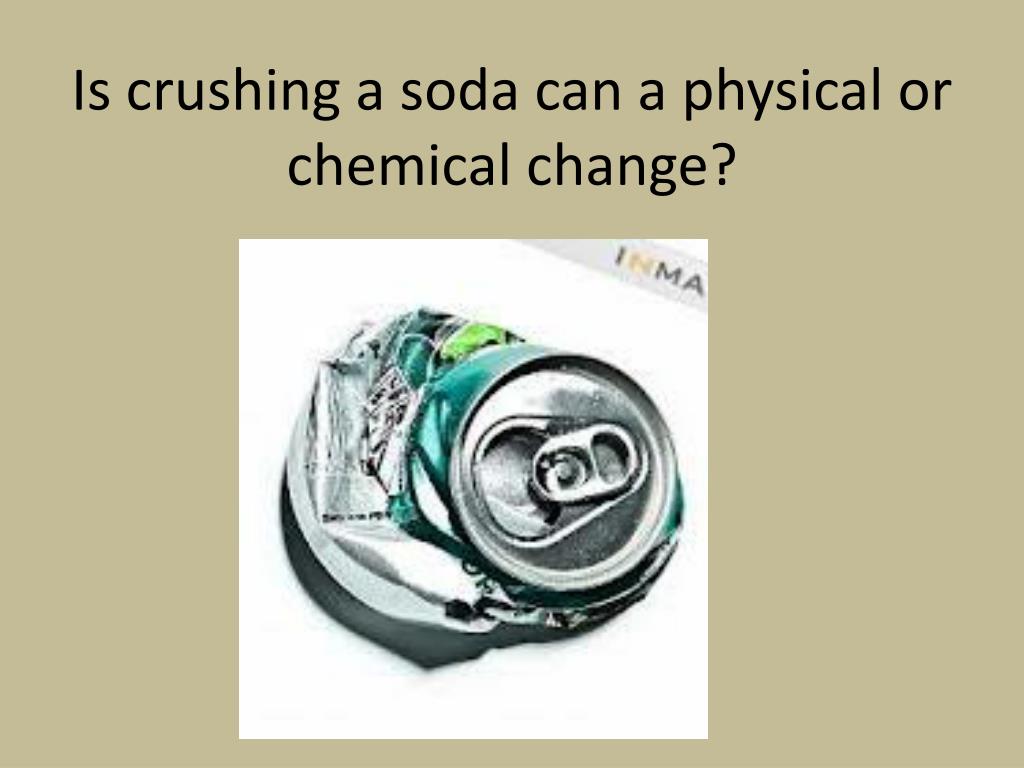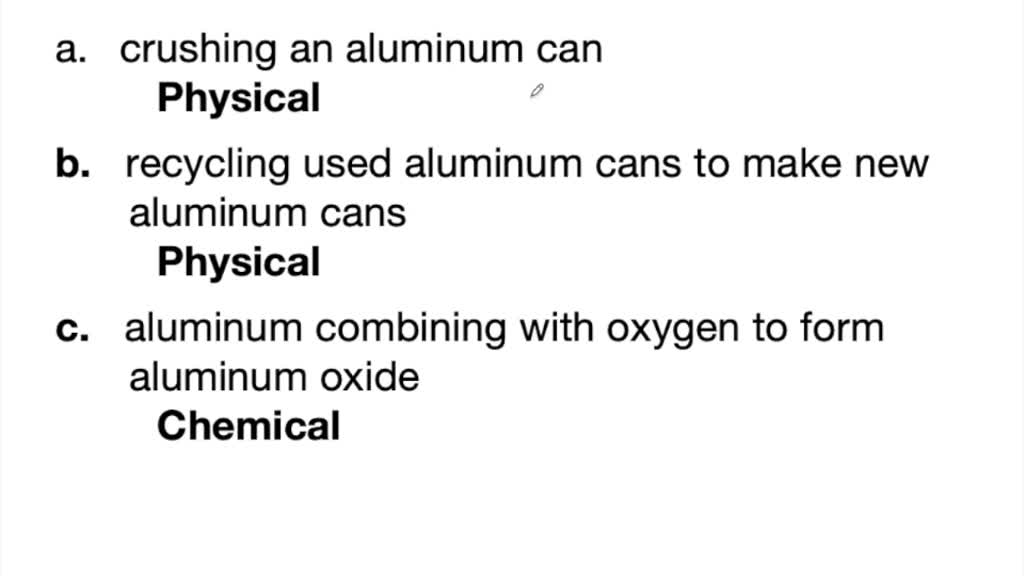Is Crushing A Can A Physical Or Chemical Change

The seemingly simple act of crushing an aluminum can sparks a debate that delves into the fundamental principles of chemistry and physics: is it a physical or chemical change? This question, often posed in introductory science classes, reveals the nuanced definitions that separate alterations in form from alterations in substance.
At the heart of the matter lies the distinction between physical and chemical changes. Understanding this difference is crucial for comprehending how matter interacts and transforms around us, impacting everything from recycling processes to the creation of new materials. The debate isn't just academic; it underscores how we perceive and categorize the world at a molecular level.
The Core Debate: Physical vs. Chemical Changes
A physical change alters the form or appearance of a substance but doesn't change its chemical composition. Examples include melting ice, boiling water, or cutting paper. Chemical changes, on the other hand, involve the rearrangement of atoms and molecules, resulting in the formation of new substances with different properties.
Burning wood, rusting iron, and cooking an egg are all examples of chemical changes. These processes are often accompanied by observable signs like color changes, gas production, or the release of heat.
Analyzing the Crushed Can
When an aluminum can is crushed, its shape is drastically altered. It transitions from a cylindrical form to a crumpled, less organized structure. However, the crucial point is that the aluminum itself remains aluminum.
No new substance is formed. The elemental composition, a defining aspect of a chemical identity, remains unchanged. This is the key evidence that points towards a physical change.
Expert Opinions and Scientific Consensus
According to Dr. Emily Carter, a professor of materials science at MIT, "Crushing a can primarily involves mechanical deformation of the aluminum. The atoms remain bonded as aluminum atoms, meaning it's a rearrangement of the solid material, not a chemical reaction."
This view is widely shared among chemists and physicists. Standard textbooks and educational resources consistently categorize processes like bending, tearing, and crushing as physical changes, as long as the material's fundamental composition is preserved.
Delving Deeper: A Microscopic Perspective
At a microscopic level, crushing a can involves changes in the arrangement of the aluminum atoms within the metal's crystalline structure. These changes can introduce stress and strain into the material, potentially affecting its mechanical properties.
However, these alterations within the crystal lattice don't break the chemical bonds holding the aluminum atoms together. The aluminum atoms remain bonded as aluminum atoms, still forming aluminum.
Potential Ambiguities and Nuances
While crushing a can is generally considered a physical change, subtle chemical changes could theoretically occur under extreme conditions. For instance, if the crushing process generates significant heat due to friction, it could potentially lead to oxidation of the aluminum surface.
This is usually negligible in typical can-crushing scenarios. The surface oxidation is a separate process and not a direct consequence of the mechanical deformation itself.
The Significance of Understanding Physical vs. Chemical Changes
Understanding the distinction between physical and chemical changes has practical implications across various fields. In recycling, for instance, knowing that crushing aluminum cans only involves a physical change highlights the fact that the material can be melted down and reformed without altering its fundamental properties.
This makes aluminum a highly recyclable material. In materials science, this understanding helps engineers design materials with specific properties by controlling their physical structure and chemical composition.
A Human Angle: Engaging Students with Science
The crushed can question provides a relatable and engaging way to introduce students to scientific concepts. Demonstrating the difference between physical and chemical changes using everyday objects helps make abstract ideas more concrete.
It also encourages critical thinking and observation skills, fostering a deeper appreciation for the science that surrounds us. Asking questions such as this helps students to look at the world in new ways.
Conclusion: A Definitive Physical Change
In conclusion, crushing an aluminum can is overwhelmingly a physical change. While the can's shape is altered drastically, its chemical composition remains the same. The aluminum remains aluminum.
This reinforces the importance of distinguishing between changes in form and changes in substance. This simple example offers a powerful lesson in the fundamental principles that govern the material world.



+crushing+(can)+cutting+(paper).jpg)














